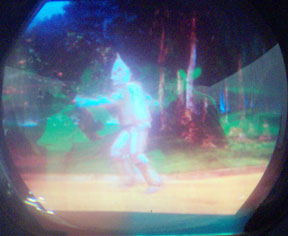About the time, in the early ‘60s, when my CT-100 'found' me, a personnel director at CBS and I were discussing my joining CBS labs. The talk took place in Manhattan. At one point in our conversation, I broached a new subject, that of the defunct 1951 CBS field-sequential color television standard, saying that it was a simpler system with advantages over the current NTSC compatible color system and, “If that system were in use today, it would be all-electronic, the color picture tube would be much easier to produce, and so virtually every console-TV sold would be color.”
I could tell from his reaction that sequential color was, even after a dozen years, a subject both alive and foaming within at least some of the halls at pre-Black Rock; because, at the end of our conversation, the guy made this offer: I’ll take you up to CBS labs and introduce you to Peter Goldmark, just let me know when. [It was a lot of years ago, so I’m not quoting here, but that was the essence of his statement.] At the time, I had no interest in moving to Connecticut where the labs were. And so I never took him up on his offer. Wish I’d-a done it differently now. I guarantee that any conversation with the developer of field-sequential color would have quickly moved to... you-know-what. Today. Well, I may have passed up an opportunity to discuss field-sequential color TV with its developer back in the early ‘60s, but not on a 2004 opportunity to finally view genuine CBS field-sequential color television at the Early Television Convention in Hilliard. Thanks to Phil Dudley, who took a series of digital photographs, we have screen shots from the museum’s restored 1951 Gray Research field-sequential color television monitor. Although it was known and reported in 1950 that RCA’s new tricolor shadow mask CRT could support any one of the three competing color systems, all commercial CBS field-sequential reproducers were of the spinning color-wheel type. The Gray Research monitor is a spinning color-wheel design. John Folsom’s 1949 RX-43 field-sequential color receiver was also on hand and operational. This discussion will feature the Gray Research monitor. A little background. A DVD of “The Wizard of Oz,” the 1939 color movie with Judy Garland, Billie Burke, Margaret Hamilton, et al., was selected to feed composite video to a custom-built NTSC-to-CBS Field Sequential Color transcoder. The device, designed by Darryl Hock, has the capability to accept S-video from a video source, but a suitable interface cable was unavailable and so composite video was used exclusivly for these photographs. The S-video is prefered because it has separate chroma and Y signal paths, which eliminates undesirable artifacts found in composite video, and it has wider video bandwidth than composite. This is particularly desirable when feeding the Gray Research monitor, which has a bandwidth of six megacycles. Component video, although superior and the best of the three, was not a transcoder option because of design complexities, according to Darryl. How to photograph CBS color? A film camera on a tripod set for 1/15th second exposures will usually take a decent screen picture of NTSC video. For CBS field-sequential color, both motion and still images were photographed. Phil had his 3-megapixle digital camera set for.... As suspected, the motion shots, those taken during DVD playback, have greater artifact issues. When the DVD player was paused, results improved. Remember also, this is a 405-line system with its significantly fewer active scan lines than NTSC’s 525, and, as such, looked different from NTSC scan lines (different to those of us who waste time with things like squinting at scan lines). Plus, there is a vintage, not-original-equipment, magnifing lens in front of the CRT that seemed to add some distortion to the photographed image. Here’s the result of a motion shot followed by a close-up to show the CBS field-sequential scanning lines.
Next, there's a close-up of an area just behind (to the right) of the Tin Man that shows CBS field-sequential scanning lines. This next picture, remember, is a magnified section of the above image.  You can see in both pictures a demarcation that defines an area of low-noise video and one indicative of high-noise video. The green ‘leaves’ are in the quiet area, while just to the right you find, sweeping upward, a clear boarder defining the two areas. This same pattern appears on other ‘motion’ pictures, in the same location, and independent of program content. This is an artifact of the photographic process that is not observed on the screen. Next, just a slightly off-center shot adds pesky reflections to the magnifier lens and minor curvilinear aberration to a video image.
Paused pictures. When the DVD player is placed in pause, the situation improves markedly when photographing the screen. Only the left twenty-percent or so of the picutre has a puzzling issue. Notice three sets of near-horizontal lines that criss-cross. The lower set of lines is seen in a close-up.
 It is paused pictures that will be seen in the rest of this presentation. Another issue with color. There’s more to this color story. CBS controlled the chromatic and absorption characteristics of the three color filters by specifing Wratten numbers. Historical reference specifies Wratten numbers 25 for red, 47 for blue, and 58 for green. The filters used on the Gray Research field-sequential color television monitor are visual approximations and not exact matches. Couple that with the realization that a CBS field-sequential color camera with similar filters was not used the generate the color video. Also, color gamut of the CBS system according to records was generally less than that of the RCA-based dot sequential system in the green and particularly in the blue directions. Both, however, exceed that of printing inks. All that said, in the real-life April 25, 2004, eyeball situation, the 1951 CBS system produced brilliant color pictures. All the pictures shown here were untouched except for croping and/or magnification.
 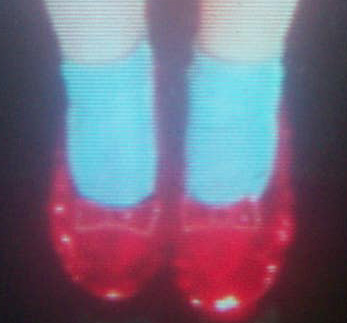 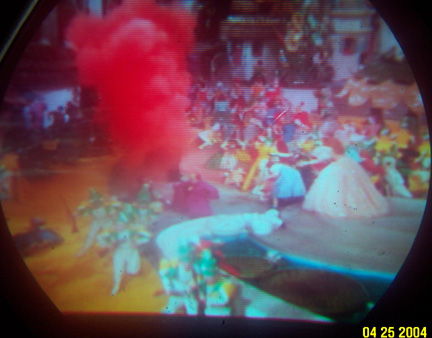   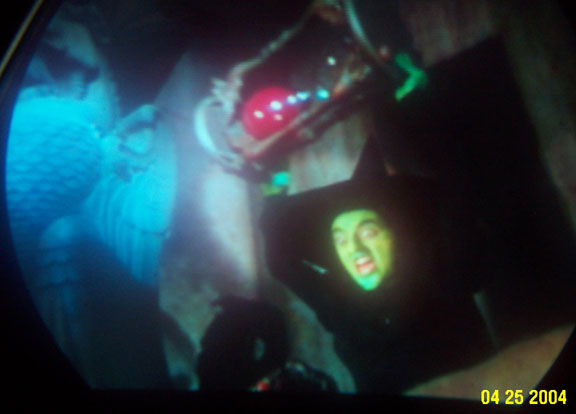 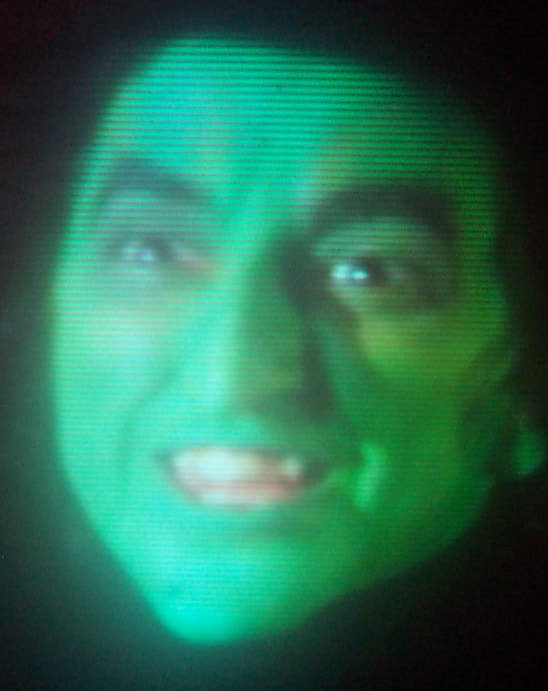
|


